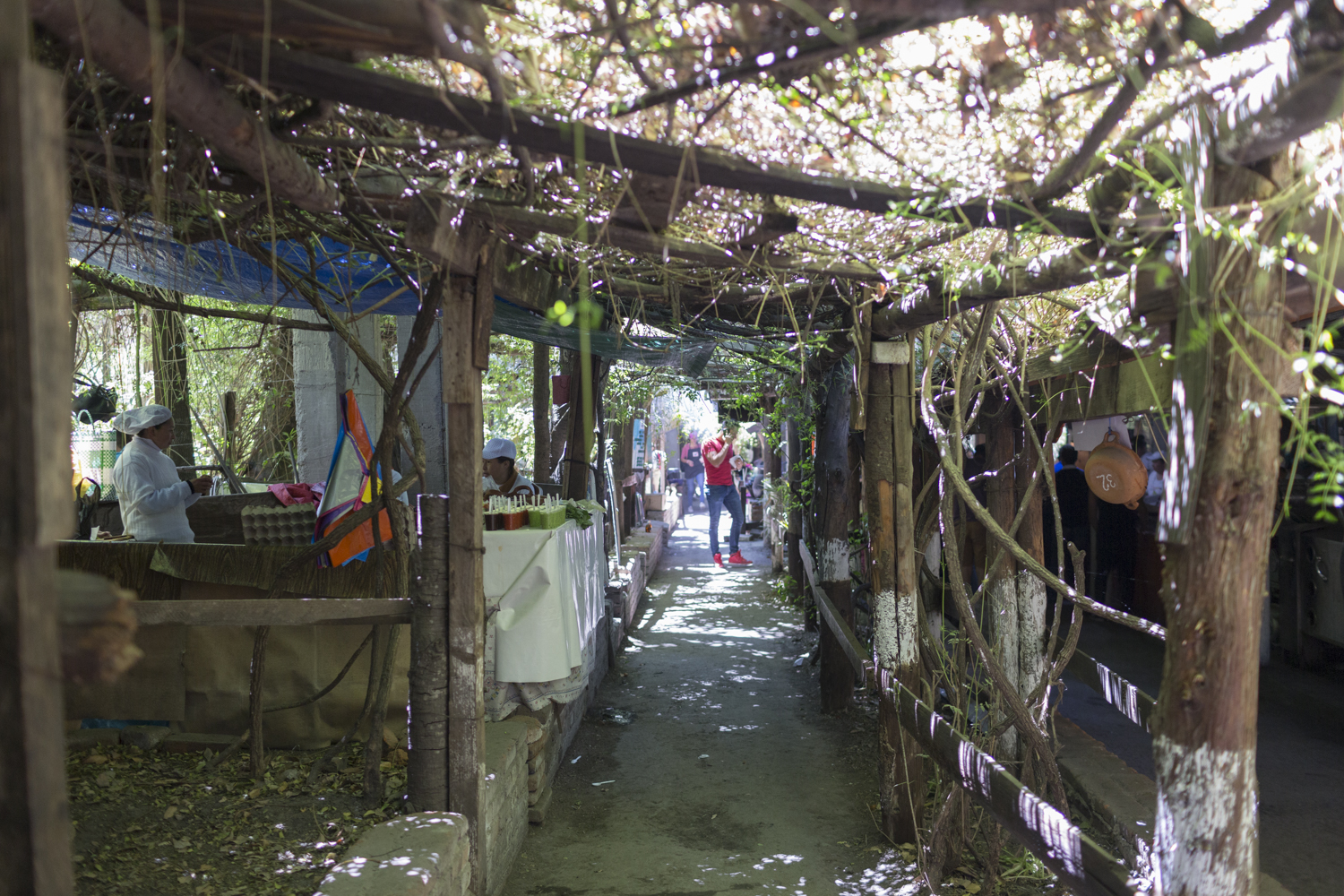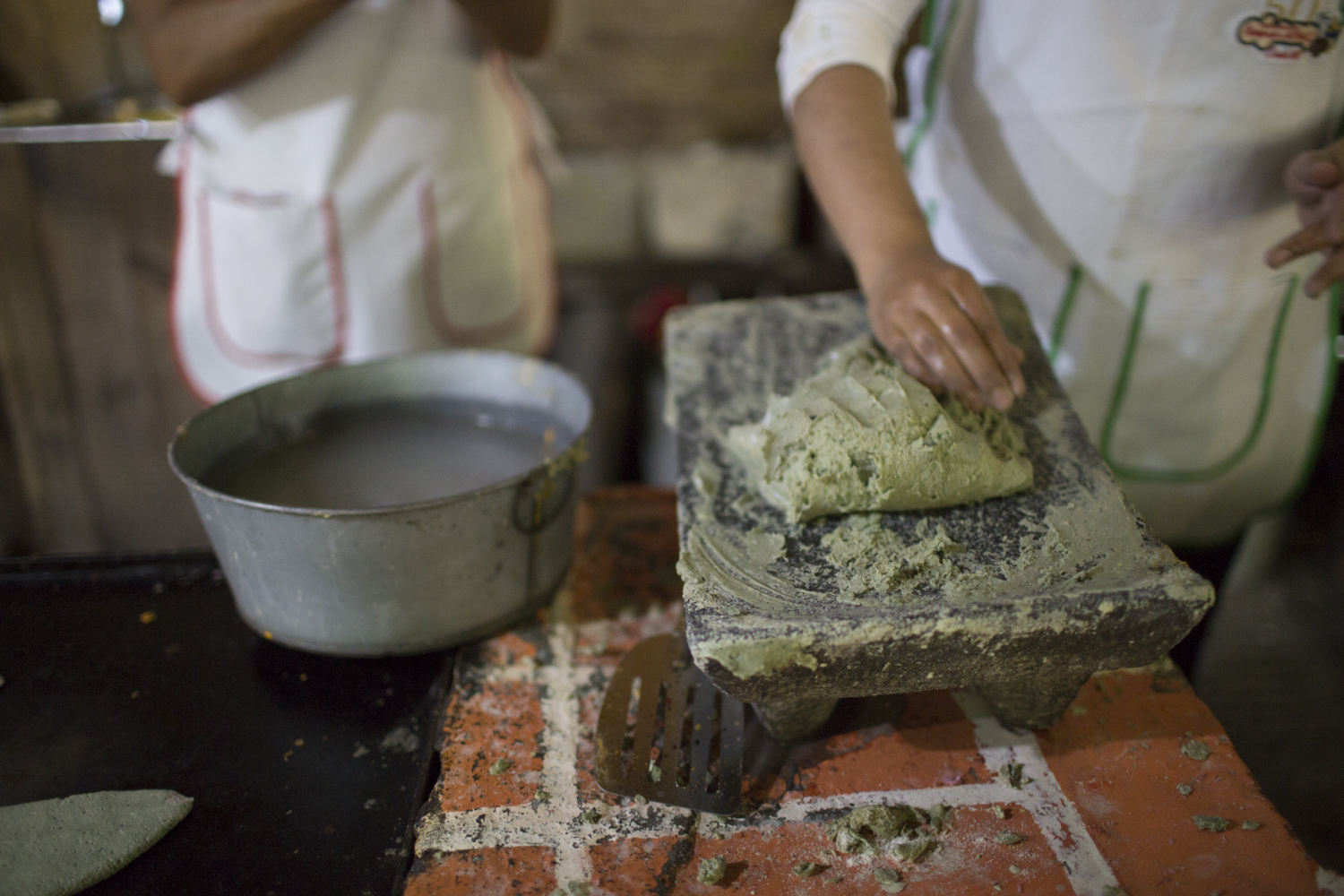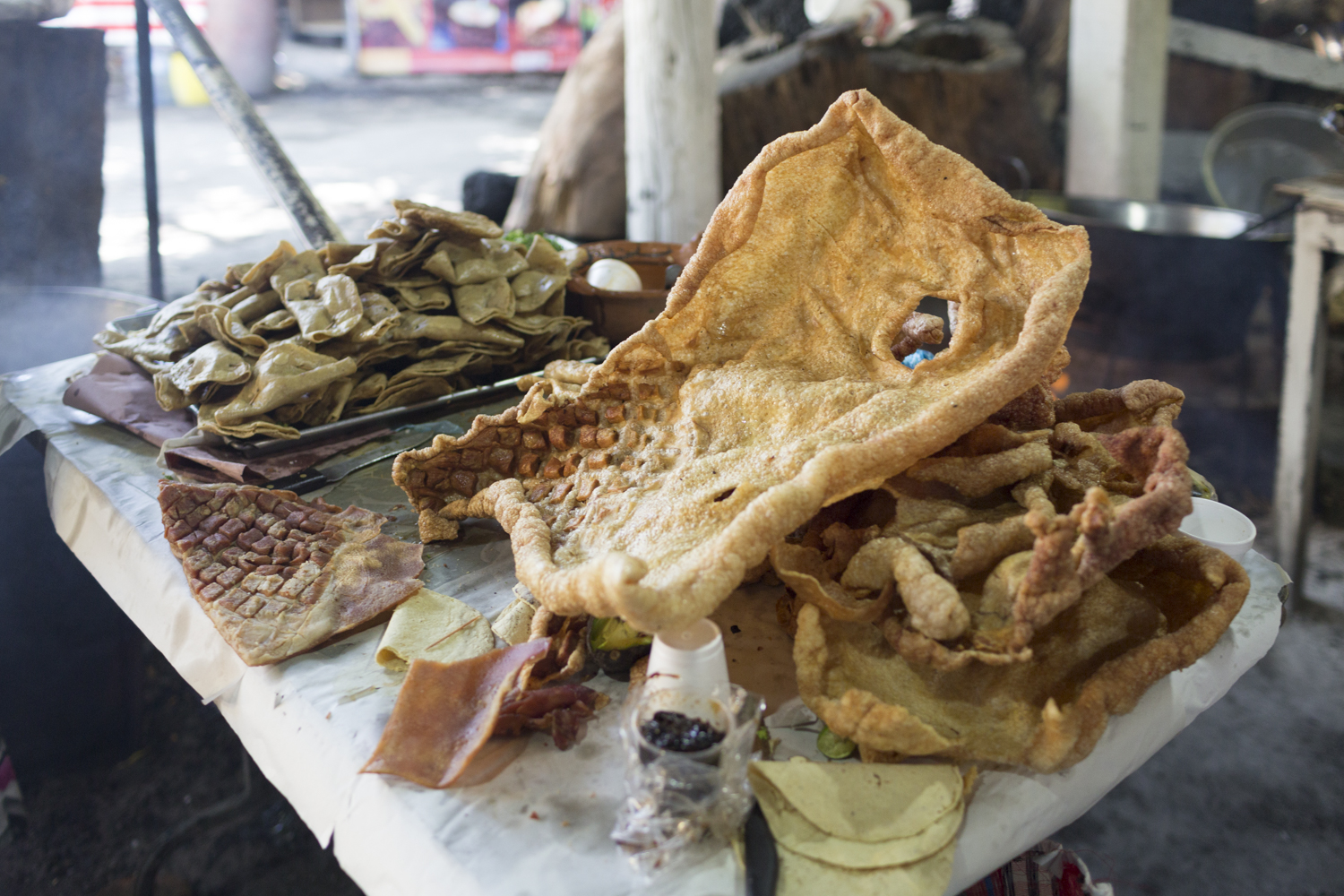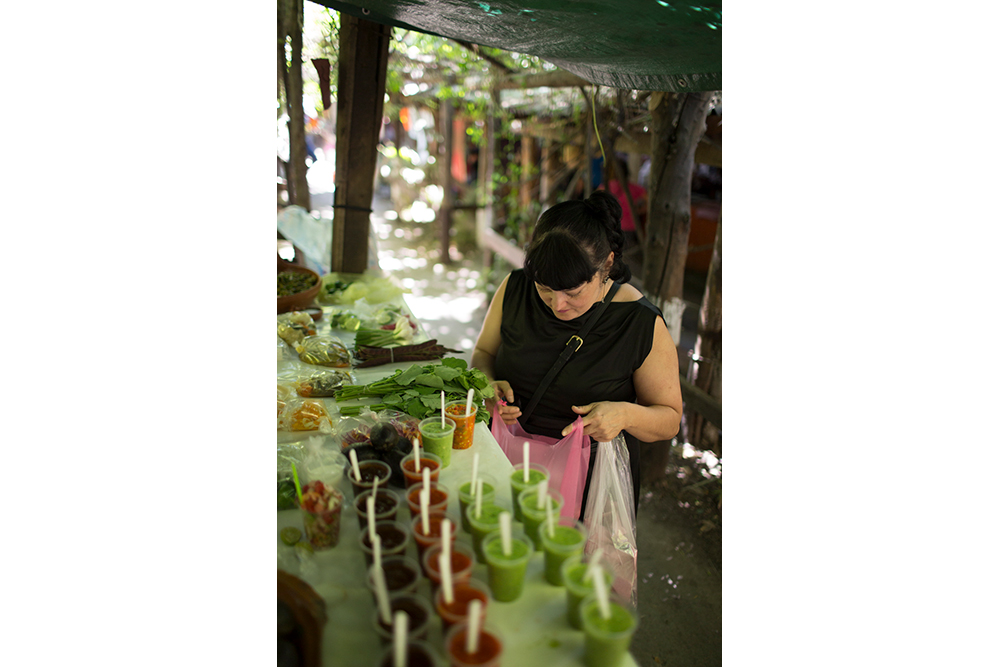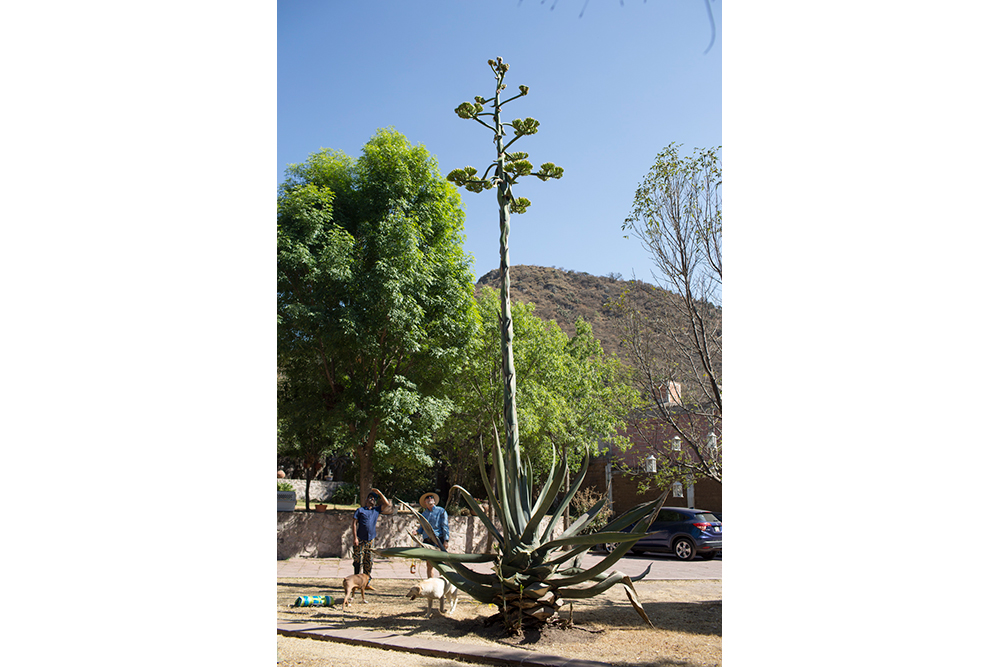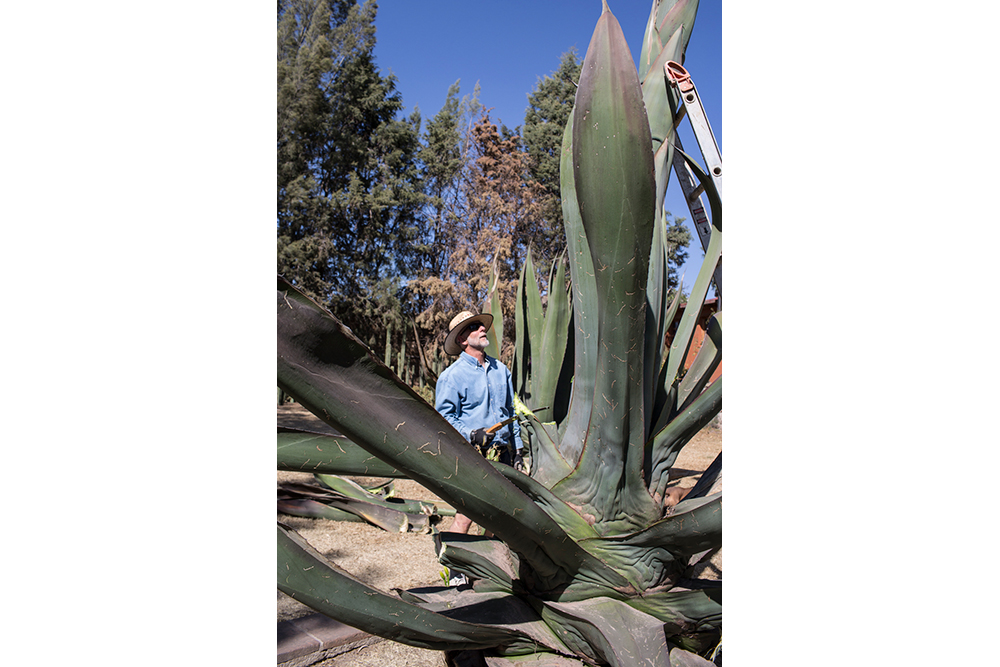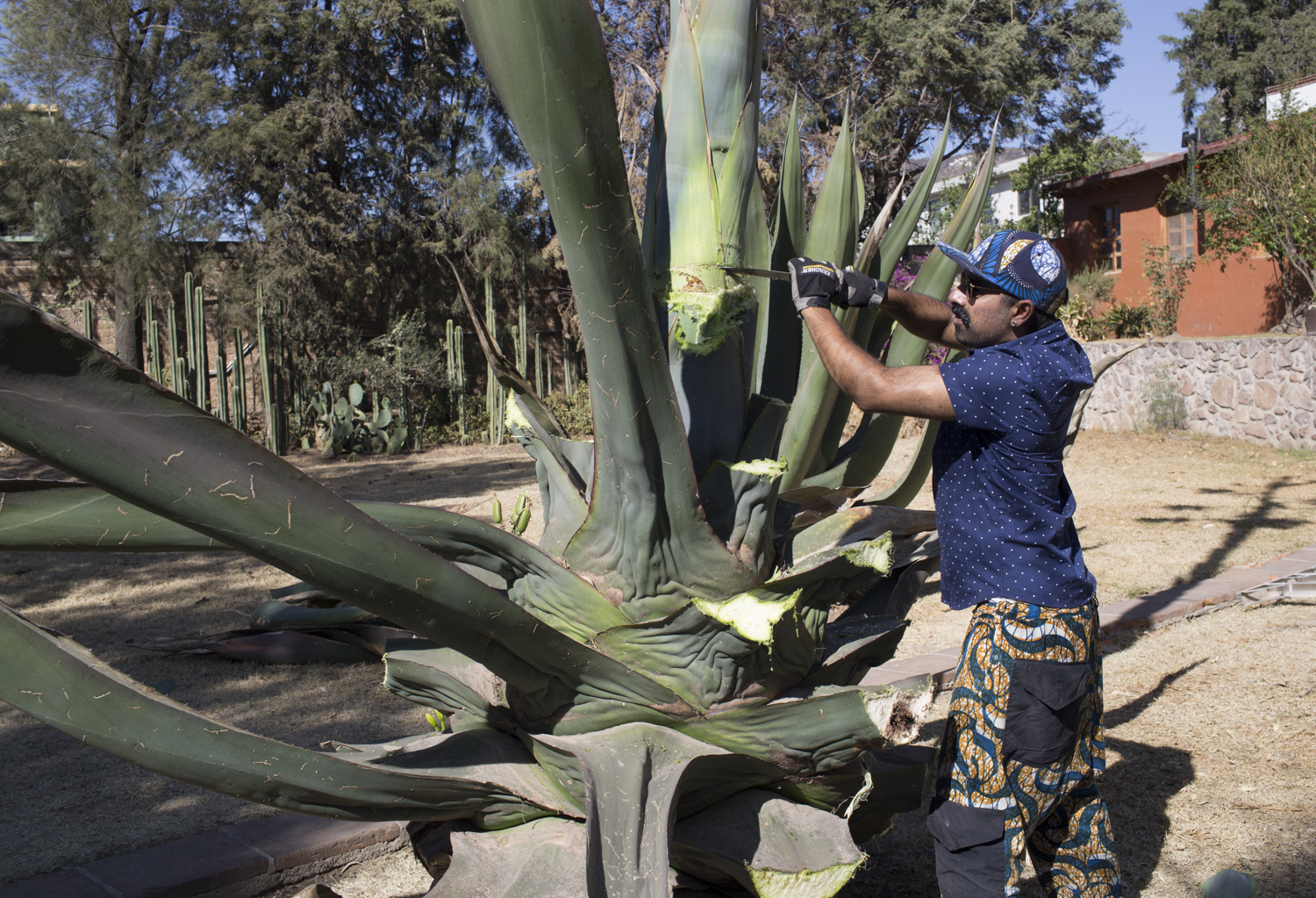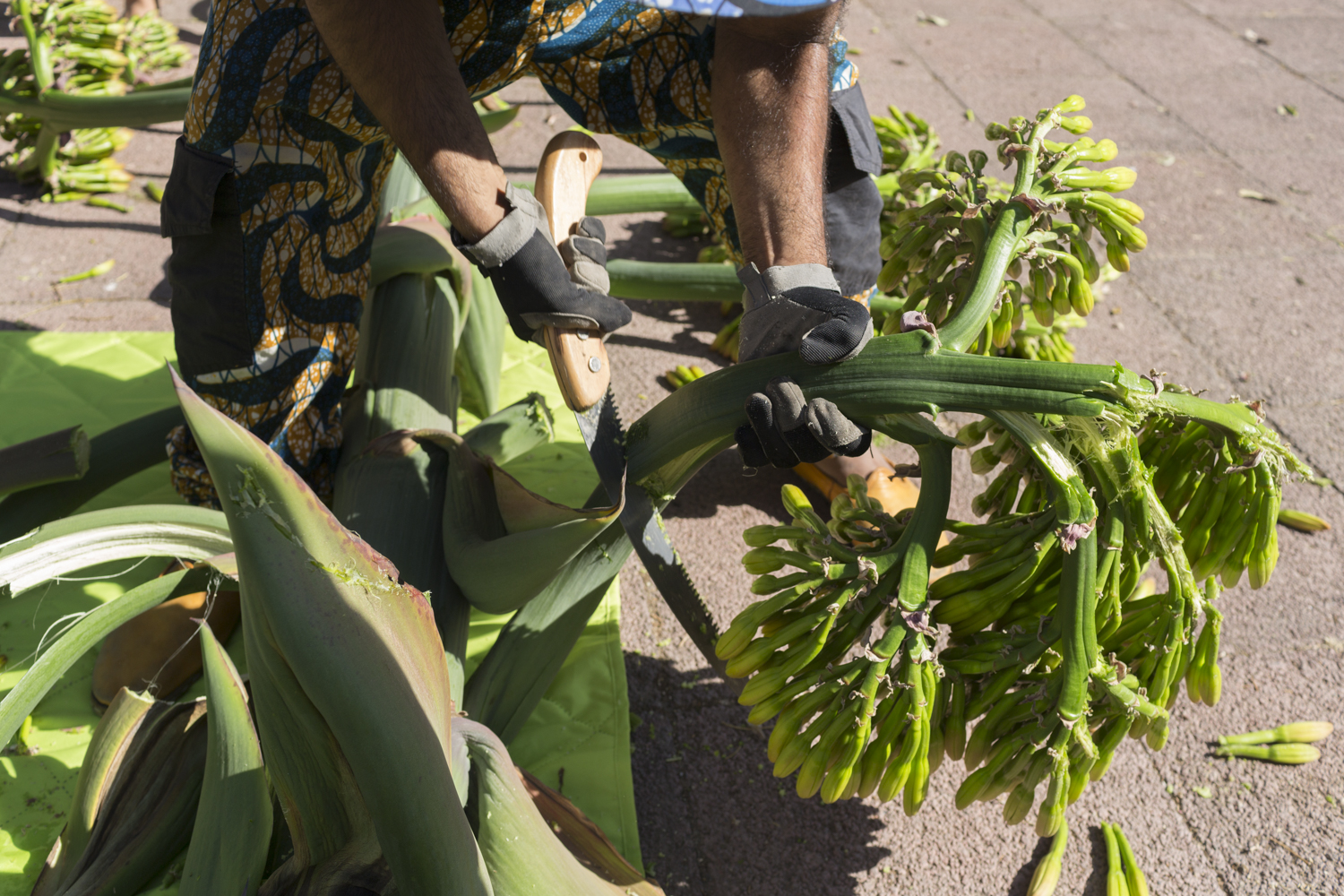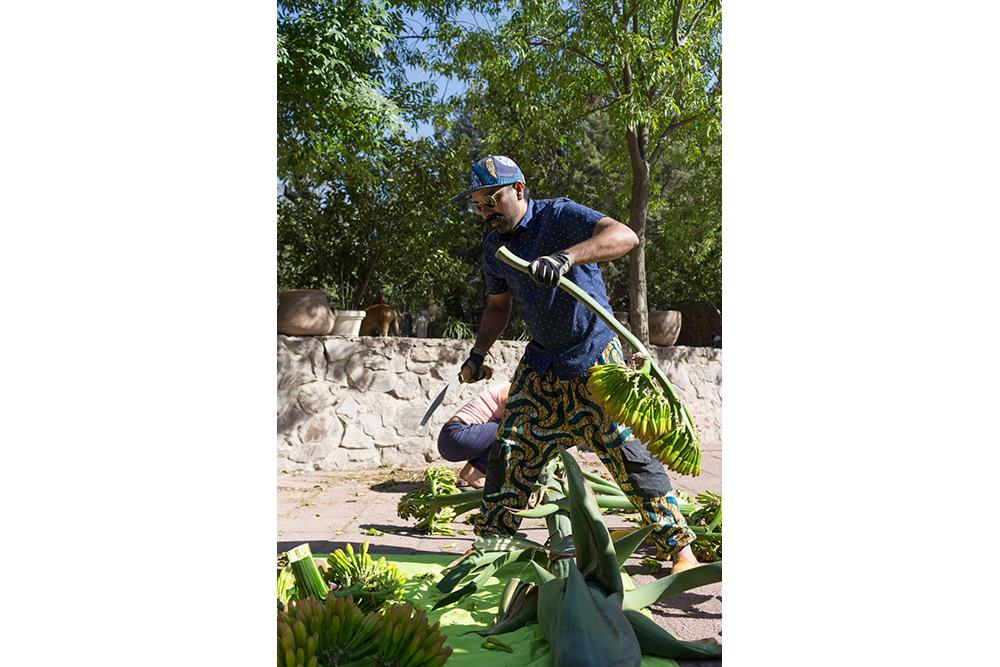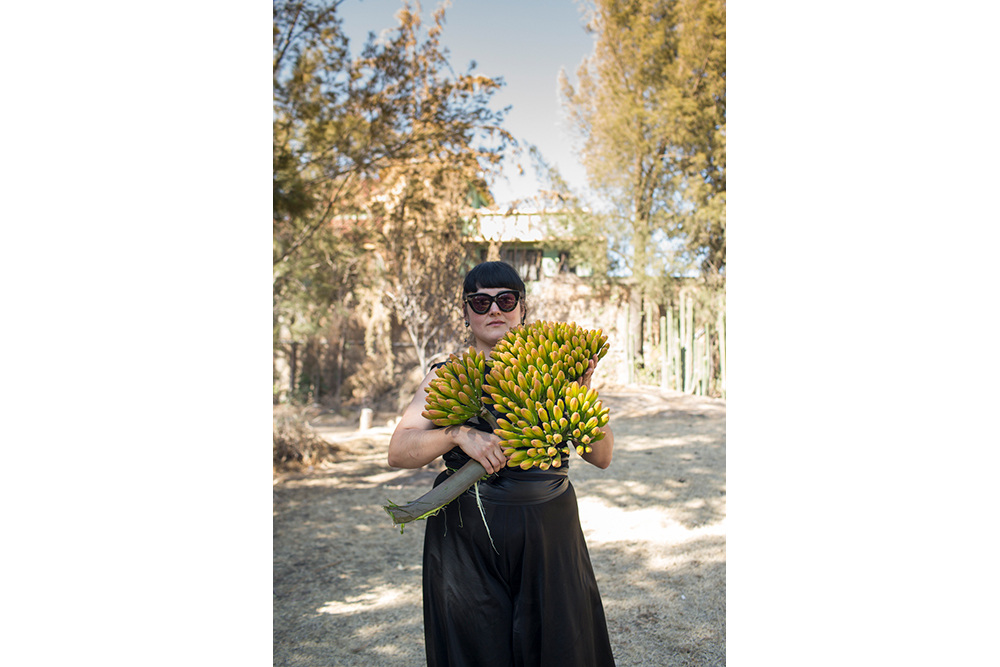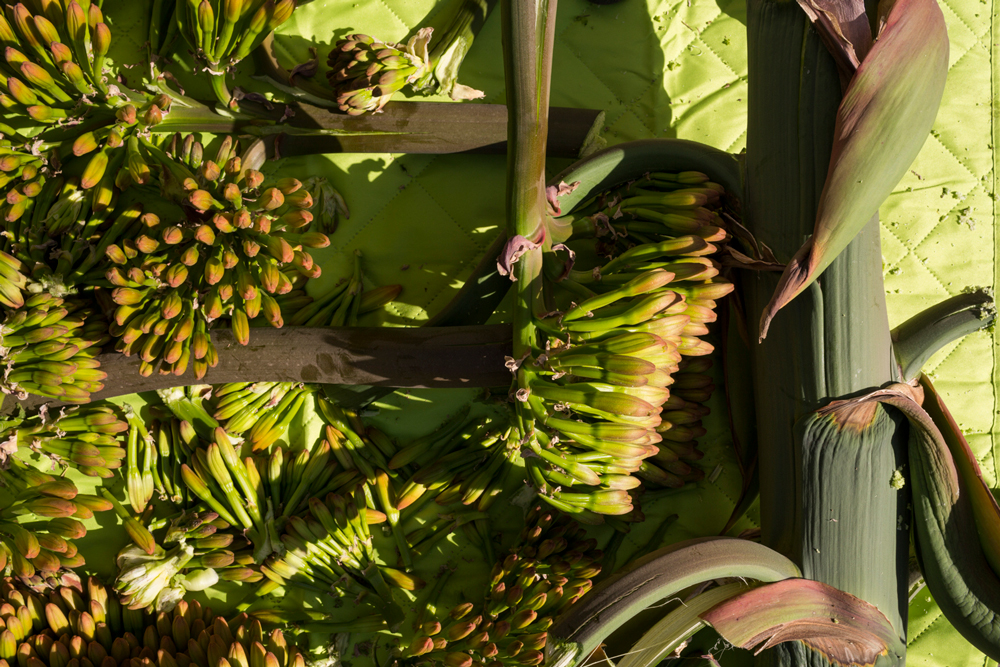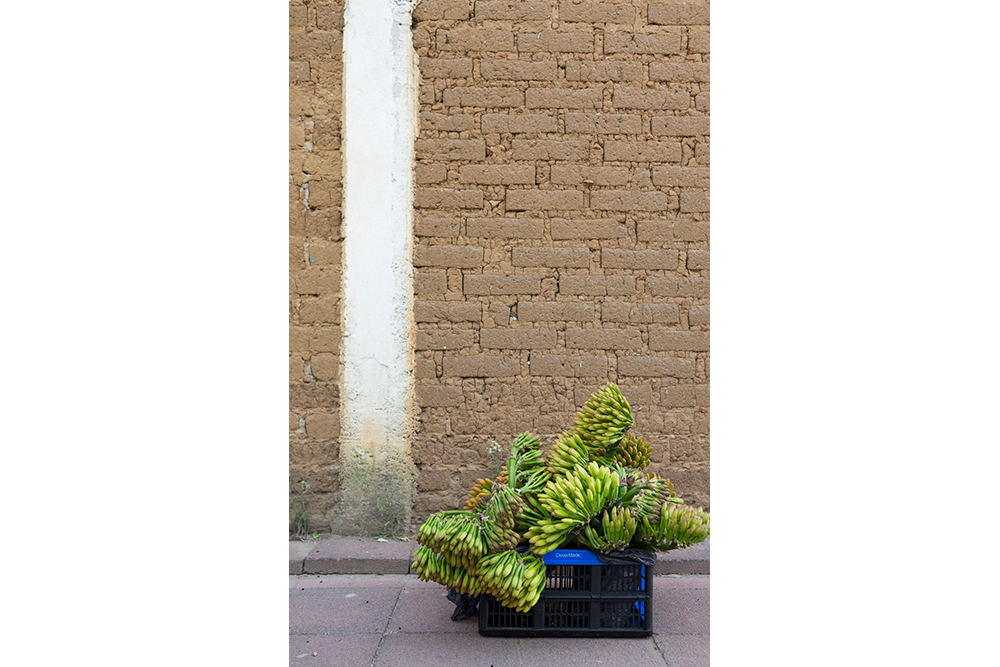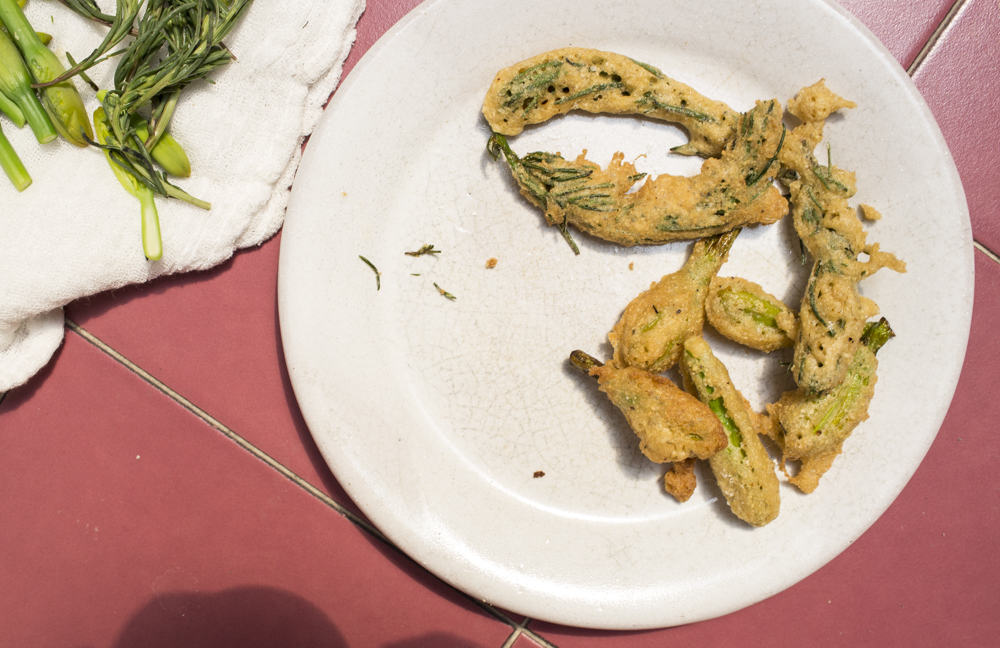Harvesting Edible Agave Flowers in Texacoco
It was Sunday in Mexico City, and I had just arrived for my two week long residency at Masala y Maiz, a restaurant project started by Saqib Keval and Norma Listman. It was their one day off, and they were whisking me away to Norma’s family home in Texacoco, just Northeast of the city. There, we would seek-out barbacoa and have a picnic in what I can only describe as the original food court — a collection of stalls organized under a maze of brambles in the countryside. They packed linens and a cold bottle of their hibiscus mead for easy daytime drinking, and we were off.
After an hour’s drive, we pulled out onto a dirt path, and climbed down to a central corridor protected by an arbor of vines and branches overhead. To our left and right were enclaves where open flames licked cauldrons bubbling with fried plantains and various spicy stews. Women formed masses of blue masa into tortillas for freshly griddled quesadillas, moving so fast the precise work appeared as an unconscious tick. My favorite of the vendors just sold small clay dishes with salt and homemade sauces, red, green, and almost black (this was chipotle pepper in a piloncillo syrup), portioned into little plastic cups with spoons for serving.
Sated like I’ve never been before, we returned to Norma’s parents’ house with soda water full of pulqué, a fermented beverage made from the maguey plant. It was an appropriate addition to impending activity — chopping down the towering flower of the 15 year old agave plant in their front yard. This would be a family activity, with all hands on deck, and lively debate as to the plan of attack. All in all, we sawed, hacked, lassoed and ran for cover.
The agave plant is a hopeless romantic. It thrives in the harshest of desert climates, storing reserves of water in its waxy, succulent leaves. The agave only flowers once in its 15-20 year lifespan, unleashing a lifetime of energy to shoot one spectacular blossom up into the sky, before it succumbs to a sudden death. The bloom is a final effort to continue the species, but as it turns out, it is a delicacy worth the two decade long wait. We sawed, chopped and lassoed, bringing the prehistoric seeming plant to the ground. We collected the bounty and trucked it back to the city, where we have been blanching, frying pickling and roasting it since.
For those of you with access to agave flowers (Los Angeles, I’m looking at you), cooking with them is easy. Simply remove the buds and 1″-2″ of the stalk. The stalk is the best part, tastes a bit like asparagus. Blanch them in boiling water for one minute. At this point, you could roast them, sauté them, or do what I did, which was to create a basic chickpea batter spiced with cumin and chile, and shallow fry them on the stovetop until crispy.

